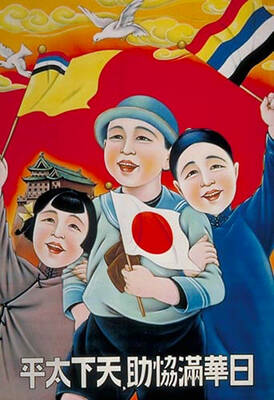Disagreements about the nature of government, culture and freedom -- once matters of abstract theory -- have recently become all too urgent. What sort of government is ideal? What are the connections between a culture and its ideas of freedom? And how is freedom to be balanced with the rule of law? The fates of nations at war rest on such questions.
To gain some perspective it may help to turn away from the international arena and look instead at matters ordinarily left for specialists: issues involving copyright law, intellectual property and open-source computer software, issues that seem far removed from Fallujah. Yet now in courtrooms, in scholarly books and in popular tracts it can seem as if similar things are being debated.
For what is at stake in this more placid arena other than questions of ownership and concepts of liberty and obligation? And aren't the stakes high here as well, particularly as technological innovations make possible a universe in which everything can be copied and anything goes as well as a universe in which everything is controlled and nothing is permitted?

PHOTO: NY TIMES
To many critics of copyright, the parallels are clear. Discussions of students being prosecuted for downloading MP3 files or of communally revised software being made freely available can lead to comparisons with anti-globalization protests or to advocacy of multilateralism in a new world order. Copyright law, technology and political culture seem to raise related issues.
For some, in fact, they can even become apocalyptic. "We are less and less a free culture," declares Lawrence Lessig, a professor at Stanford Law School, in his new book, Free Culture: How Bad Media Uses Technology and the Law to Lock Down Culture and Control Creativity. "Wars of prohibition are nothing new in America," he says of the government crackdown on piracy. "This one is just something more extreme than anything we've seen before."
That seems to disregard the gangsters and guns of prohibition, but in another new book, The Anarchist in the Library: How the Clash Between Freedom and Control Is Hacking the Real World and Crashing the System, Siva Vaidhyanathan, a professor of communication studies at New York University, expresses a similar sense of emergency: "In desperation, more and more of us are embracing information anarchy."
Information war
He writes, "The strategies that are emerging in copyright battles resemble those in more important battles over democracy and human dignity." He sees a growing worldwide confrontation between oligarchs who seek control over information ("legislators, judges, Cabinet officers, leaders of multilateral regulatory institutions, university presidents, corporate executives, lobbyists and generals") and anarchists and liberators ("students, educators, librarians, computer programmers, civil libertarians, religious leaders, artists, consumers, political activists and dissidents living under oppressive regimes").
These authors claim to seek balance, but their leanings are obvious (as is their lack of interest in suggesting a technological way to protect copyright). So a strange universe emerges.
Lessig even considers culture itself to evolve through variants on piracy. Everything is borrowed, used and reused in a postmodern spirit of what he calls "rip, mix and burn." For Vaidhyanathan, culture also has an intrinsically anarchistic nature. But he also writes, "Any cultural development that has made a difference in the world -- reggae, blues, needlepoint -- is really about communities sharing." His cultural ideal is something like a quilting bee in which everybody can sew anything copied from anywhere. Forget, then, the hard-won solitary labors of the artist who doesn't pirate or sample. That model just doesn't fit.
For all their complicated arguments, these writers are partly engaged in a countercultural romance. It is not just anti-modernist but also anti-modern. It yearns for a pre-industrial world in which an unbounded terrain of entertainment and folk art is somehow made freely available.
In more extreme form, translated into the political realm, it is also a romance in which power is intrinsically disruptive and the marketplace intrinsically divisive. It is the romance of radical antiglobalization in which the very existence of a military or commercial power is evil. Here is Vaidhyanathan, swept away: "The best way to stop any illegal act, terrorist or otherwise, is to make sure that terrorists do not have support in society in general" by making sure "life is good and secure," inspiring a loyalty to the "larger community."
That same romance though, can lead to real accomplishments if properly harnessed. One example is the open-source software movement, which grew out of an idea proposed by the computer scientist Richard Stallman in 1984. Stallman created a license that would allow users to do whatever they wanted with a program -- study it, modify it, redistribute it -- as long as anything they produced preserved the same lack of restriction.
This inspired hackers, who worked on code for the fun of it as well as for the thrill of bypassing the mainstream (and opposing Microsoft's dominance). The Linux operating system is still developing in this manner after more than a decade of communal work. It is being used in about 40 percent of American companies and runs on Google's 10,000 servers.
Changing the rulers
In a valuable new account of the movement, The Success of Open Source, Steven Weber, a political scientist at the University of California at Berkeley, argues that "by experimenting with fundamental notions of what constitutes property, this community has reframed and recast some of the most basic problems of governance."
For as Weber shows, the development of this complicated product to which no one has the rights has required thousands of contributors, panels of overseers and a relatively strict organizational procedure. Yet no one is paid, and despite temptations and fierce conflicts, few run off in other directions.
This almost institutional activity may not be the one imagined by Stallman. It may not fulfill the romance of "rip, mix and burn." And open source might not have come so far without the foil of Microsoft and without companies like IBM investing in something they could never own. But for now, it works. Weber suggests that open source property resembles ideas of "stewardship or guardianship." He finds a resemblance to the organization of religious groups in which even the leader is subject to a community's rules.
This may be another form of governance then: not a straightforward democracy nor a capitalist enterprise yet bound by ambition and religious fervor, with liberty and law in precarious balance. Such an alternative might even be welcome in other, more bloody realms.

In recent weeks the Trump Administration has been demanding that Taiwan transfer half of its chip manufacturing to the US. In an interview with NewsNation, US Secretary of Commerce Howard Lutnick said that the US would need 50 percent of domestic chip production to protect Taiwan. He stated, discussing Taiwan’s chip production: “My argument to them was, well, if you have 95 percent, how am I gonna get it to protect you? You’re going to put it on a plane? You’re going to put it on a boat?” The stench of the Trump Administration’s mafia-style notions of “protection” was strong

Oct. 6 to Oct. 12 The lavish 1935 Taiwan Expo drew dignitaries from across the globe, but one of them wasn’t a foreigner — he was a Taiwanese making a triumphant homecoming. After decades in China, Hsieh Chieh-shih (謝介石) rose to prominence in 1932 as the foreign minister for the newly-formed Japanese puppet state of Manchukuo in today’s Northeast China. As ambassador to Japan, he was to represent the last Qing emperor Puyi (溥儀) at the event’s Manchuria Pavillion, and Taiwan’s governor-general welcomed him with the honors of a state guest. Hsieh also had personal matters to attend to — most

Late last month US authorities used allegations of forced labor at bicycle manufacturer Giant Group (巨大集團) to block imports from the firm. CNN reported: “Giant, the world’s largest bike manufacturer, on Thursday warned of delays to shipments to the United States after American customs officials announced a surprise ban on imports over unspecified forced labor accusations.” The order to stop shipments, from the US Customs and Border Protection (CBP), came as a surprise to Giant, company officials said. Giant spokesman Ken Li (李書耕) said that the CPB never visited the company’s factories to conduct on-site investigations, nor to interview or

The Korea Times announced the results of K-universities Global Excellence Rankings 2026, the nation’s first comprehensive assessment of global performance across its universities. The evaluation was launched to provide an objective analysis of the globalization status of Korean universities and to offer practical guidance for international students choosing institutions in South Korea. KOREA UNIVERSITY RANKS FIRST In the overall rankings, Korea University secured first place with a total score of 144.86, followed by Seoul National University (141.48) and Yonsei University (140.33). Rounding out the Top 10 were Sungkyunkwan University (132.20), Hanyang University (124.83), Sogang University (112.27), University of Seoul (111.10), Ewha Womans